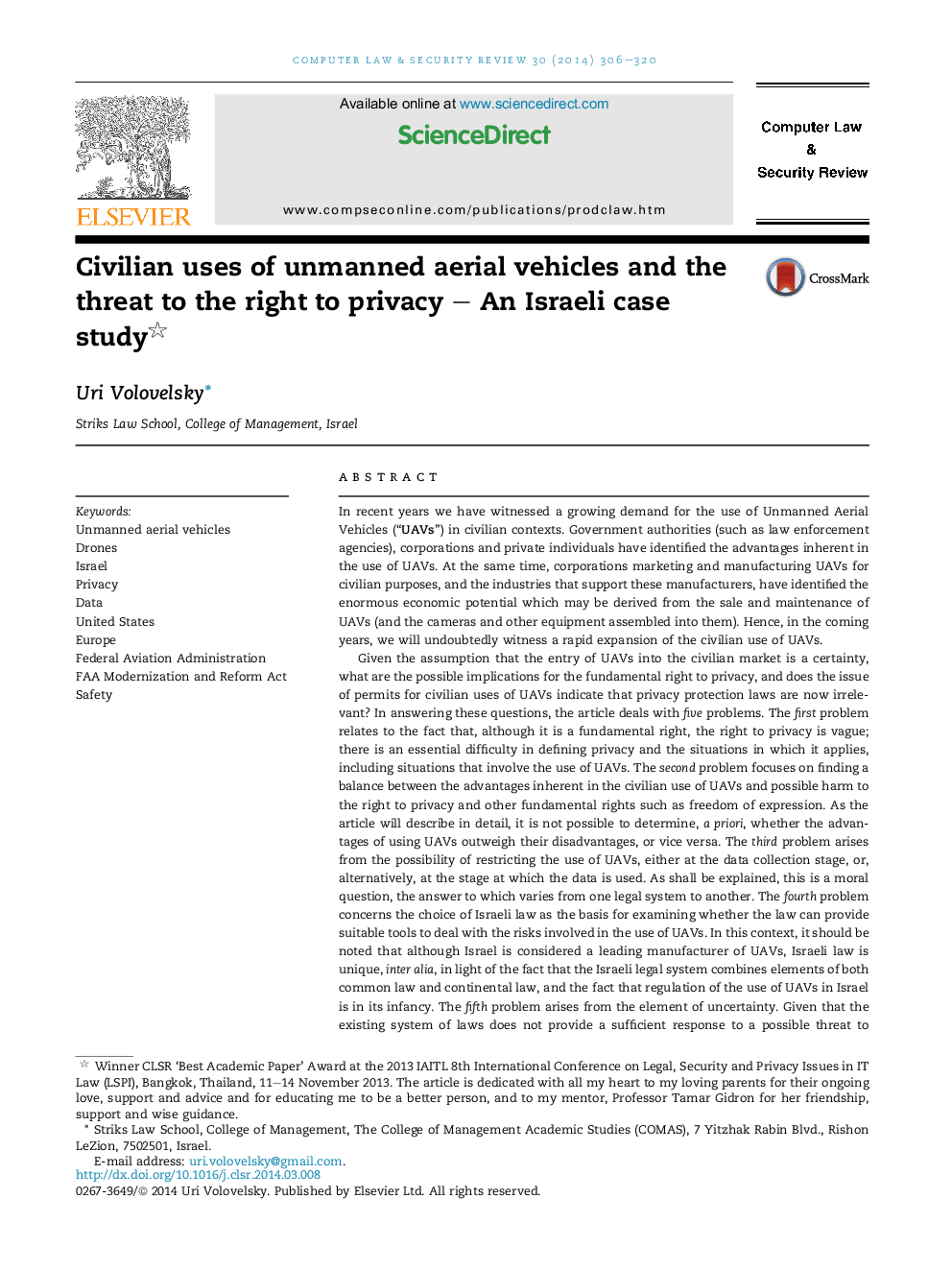| کد مقاله | کد نشریه | سال انتشار | مقاله انگلیسی | نسخه تمام متن |
|---|---|---|---|---|
| 466644 | 697862 | 2014 | 15 صفحه PDF | دانلود رایگان |
In recent years we have witnessed a growing demand for the use of Unmanned Aerial Vehicles (“UAVs”) in civilian contexts. Government authorities (such as law enforcement agencies), corporations and private individuals have identified the advantages inherent in the use of UAVs. At the same time, corporations marketing and manufacturing UAVs for civilian purposes, and the industries that support these manufacturers, have identified the enormous economic potential which may be derived from the sale and maintenance of UAVs (and the cameras and other equipment assembled into them). Hence, in the coming years, we will undoubtedly witness a rapid expansion of the civilian use of UAVs.Given the assumption that the entry of UAVs into the civilian market is a certainty, what are the possible implications for the fundamental right to privacy, and does the issue of permits for civilian uses of UAVs indicate that privacy protection laws are now irrelevant? In answering these questions, the article deals with five problems. The first problem relates to the fact that, although it is a fundamental right, the right to privacy is vague; there is an essential difficulty in defining privacy and the situations in which it applies, including situations that involve the use of UAVs. The second problem focuses on finding a balance between the advantages inherent in the civilian use of UAVs and possible harm to the right to privacy and other fundamental rights such as freedom of expression. As the article will describe in detail, it is not possible to determine, a priori, whether the advantages of using UAVs outweigh their disadvantages, or vice versa. The third problem arises from the possibility of restricting the use of UAVs, either at the data collection stage, or, alternatively, at the stage at which the data is used. As shall be explained, this is a moral question, the answer to which varies from one legal system to another. The fourth problem concerns the choice of Israeli law as the basis for examining whether the law can provide suitable tools to deal with the risks involved in the use of UAVs. In this context, it should be noted that although Israel is considered a leading manufacturer of UAVs, Israeli law is unique, inter alia, in light of the fact that the Israeli legal system combines elements of both common law and continental law, and the fact that regulation of the use of UAVs in Israel is in its infancy. The fifth problem arises from the element of uncertainty. Given that the existing system of laws does not provide a sufficient response to a possible threat to fundamental rights (in the instance discussed in the article, the threat which UAVs pose to the right to privacy), how should the legislature regulate the use of UAVs, without harming the delicate balance between the advantages and disadvantages inherent in their use.The article focuses on Israel as a case study and also comprehensively examines the solutions to the problems described above, as adopted in the United States and Europe.
Journal: Computer Law & Security Review - Volume 30, Issue 3, June 2014, Pages 306–320
